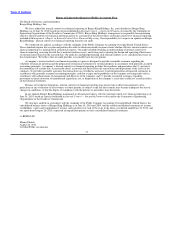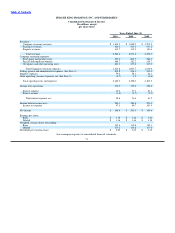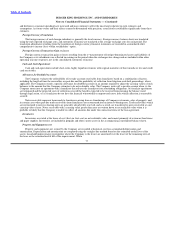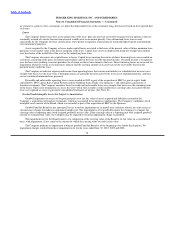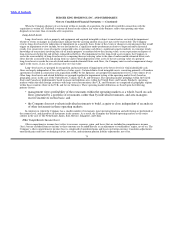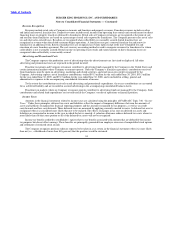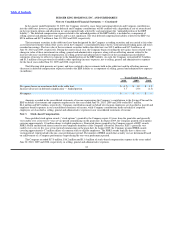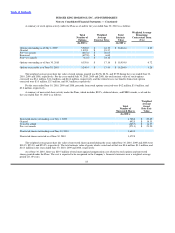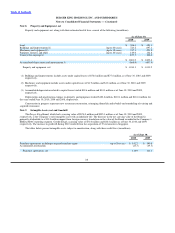Burger King 2010 Annual Report Download - page 81
Download and view the complete annual report
Please find page 81 of the 2010 Burger King annual report below. You can navigate through the pages in the report by either clicking on the pages listed below, or by using the keyword search tool below to find specific information within the annual report.
Table of Contents
BURGER KING HOLDINGS, INC. AND SUBSIDIARIES
Notes to Consolidated Financial Statements — (Continued)
we commit to a plan to close a restaurant, we adjust the depreciable lives of the restaurants long−lived assets based on the expected date
of closure.
Leases
The Company defines lease term as the initial term of the lease, plus any renewals covered by bargain renewal options or that are
reasonably assured of exercise because non−renewal would create an economic penalty. Once determined, lease term is used
consistently by the Company for lease classification, rent expense recognition, amortization of leasehold improvements and minimum
rent commitment purposes.
Assets acquired by the Company as lessee under capital leases are stated at the lower of the present value of future minimum lease
payments or fair market value at the date of inception of the lease. Capital lease assets are depreciated using the straight−line method
over the shorter of the useful life of the asset or the underlying lease term.
The Company also enters into capital leases as lessor. Capital leases meeting the criteria of direct financing leases are recorded on
a net basis, consisting of the gross investment and residual value in the lease less the unearned income. Unearned income is recognized
over the lease term yielding a constant periodic rate of return on the net investment in the lease. Direct financing leases are reviewed for
impairment whenever events or circumstances indicate that the carrying amount of an asset may not be recoverable based on the
payment history under the lease.
The Company records rent expense and income from operating leases that contain rent holidays or scheduled rent increases on a
straight−line basis over the lease term. Contingent rentals are generally based on sales levels in excess of stipulated amounts, and thus
are not considered minimum lease payments.
Favorable and unfavorable operating leases were recorded in 2002 as part of the acquisition of BKC by private equity funds
controlled by TPG Capital, Bain Capital Partners and the Goldman Sachs Funds (“the Sponsors”) and subsequent acquisitions of
franchise restaurants. The Company amortizes these favorable and unfavorable leases on a straight−line basis over the remaining term
of the leases. Upon early termination of a lease, the write−off of the favorable or unfavorable lease carrying value associated with the
lease is recognized as a loss or gain in the consolidated statements of income. (See Note 18.)
Goodwill and Intangible Assets Not Subject to Amortization
Goodwill represents the excess of the purchase price over the fair value of assets acquired and liabilities assumed in the
Company’s acquisitions of franchise restaurants, which are accounted for as business combinations. The Company’s indefinite−lived
intangible asset consists of the Brand, which was recorded as part of the acquisition of BKC by the Sponsors.
Goodwill and the Brand are not amortized, but are tested for impairment on an annual basis and more often if an event occurs or
circumstances change that indicates impairment might exist. The impairment test for goodwill requires the Company to compare the
carrying value of reporting units (with assigned goodwill) to fair value. If the carrying value of a reporting unit with assigned goodwill
exceeds its estimated fair value, the Company may be required to record an impairment charge to goodwill.
The impairment test for the Brand consists of a comparison of the carrying value of the Brand to its fair value on a consolidated
basis, with impairment, if any, equal to the amount by which the carrying value exceeds its fair value.
The Company performs its impairment testing of goodwill and the Brand as of the beginning of its fourth fiscal quarter. No
impairment charges resulted from these impairment tests for the years ended June 30, 2010, 2009 and 2008.
78




